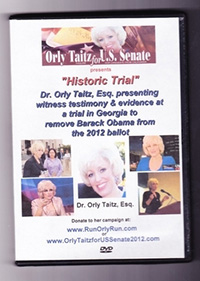From reader Bob S. Did anyone see Hank Paulson coming out of his house lately?
Posted on | May 31, 2009 | 2 Comments
Hmmm…. Title 10 of the United States Code provides for both “organized” and “unorganized” civilian militias. While the organized militia is made up of members of the National Guard, Naval Militia, and others, the unorganized militia is composed entirely of private individuals.
While many have poo-poo-ed the idea that it will ever be called to duty, the United States civilian militia does legally exist. I can see the politicians now… running to the ‘secret’ basement at the vice president’s residence.
bob s
Category: Uncategorized
Comments
2 Responses to “From reader Bob S. Did anyone see Hank Paulson coming out of his house lately?”












 29839 Sta Margarita Pkwy,
29839 Sta Margarita Pkwy, 
 Videography by Barbara Rosenfeld
Videography by Barbara Rosenfeld 


May 31st, 2009 @ 8:41 pm
As Dr. Orly has posted before, the Committees of Safety (www.committeesofsafety.org) is a non-profit group dedicated to upholding the Constitution, Bill of Rights, and especially to revitalizing the militia of the several states. The second amendment mentions “a well-regulated militia,” and that is the legal entity to which Dr. Orly is referring.
In colonial times, all men between the ages of 16 and 60 had to serve in the militia in order to be ready to protect the state if it were attacked or to face the government if it became tyrannical. Participation was absolutely mandatory, and if the head of the militia came by to check a man’s musket and readiness to defend and his musket wasn’t ready or working, the man was fined.
Think if every able-bodied man in this country today were part of a peaceful but organized citizens’ militia. The government would slink back to whence it came.
We definitely need to revitalize the militia of ALL the states. Statutes are being written now to do this in an organized and legal way through our state legislatures.
June 1st, 2009 @ 8:52 am
From: https://legal-dictionary.thefreedictionary.com/Militia
Another type of militia, not recognized by the federal or state governments, is the private militia. Private militias are composed of private citizens who train for armed combat. The formation of private militias became more common in the United States in the early 1990s as some political groups armed themselves to demonstrate their opposition to certain policies and practices of the federal government. One of the most publicized private militia groups was the Montana Freemen, who were involved in a lengthy standoff with agents of the Federal Bureau of Investigation in 1996.
One of the most horrifying events of the 1990s, the Oklahoma City bombing in 1995, had a significant impact on private militias in the United States during that decade. Although the bombings, which killed 169 people, were not carried out by an identified private militia, a number of individuals reportedly were drawn to join these private groups after witnessing the attack. The total number of private militia groups climbed to an estimated 370 in 1996, according to the Southern Poverty Center, which is well-known for tracking hate groups in the United States.
Militia groups faded quickly in the latter half of the 1990s, however. Law enforcement officials began cracking down on the groups, and many members reportedly became impatient in training for the causes of the various militia. By 1999, the total number of private militias in the U.S. had shrunk to an estimated total of 68. Law enforcement officials continue to track militia, citing their extremist beliefs and their propensity for conspiring to commit acts of violence.
Further readings
Fields, William S., and David T. Hardy. 1992. “The Militia and the Constitution: A Legal History.” Military Law Review 136 (spring).
Freilich, Joshua D. 2003. American Militias: State-Level Variations in Militia Activities. New York: LFB Scholarly Pub. LLC.
Hardaway, Robert, Elizabeth Gormley, and Bryan Taylor. 2002. “The Inconvenient Militia Clause of the Second Amendment: Why the Supreme Court Declines to Resolve the Debate over the Right to Bear Arms.” St. John’s Journal of Legal Commentary 16 (winter): 41–146.
Huhn, Wilson. 1999. “Political Alienation in America and the Legal Premises of the Patriot Movement.” Gonzaga Law Review 34 (spring): 417–43.
Mahon, John K. 1983. History of the Militia and the National Guard. New York: Macmillan.
Maslowski, Peter, and Allan R. Millett. 1994. For the Common Defense: A Military History of the United States. New York: Free Press.
Mulloy, D. J. 2004. American Extremism: History, Politics and the Militia Movement. London, New York: Routledge.
Uviller, H. Richard, and William G. Merkel. 2002. The Militia and the Right to Arms, or How the Second Amendment Fell Silent. Durham, NC: Duke Univ. Press.
Weigley, Russell F. 2000. A Great Civil War: A Military and Political History. Bloomington, IN: Indiana Univ. Press.
——. 1975. New Dimensions in Military History. Novato, Calif.: Presidio.
——. 1967. History of the United States Army. New York: Macmillan.
Wolfson, Andrew. 2001. “Militias Dwindle Since Oklahoma City Bombing.” USA Today. Available online at (accessed October 4, 2003).